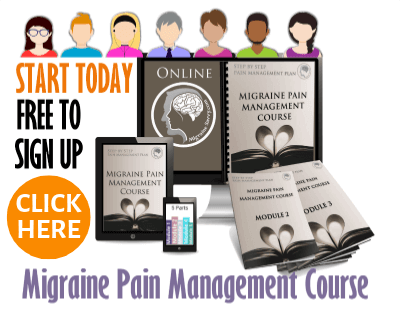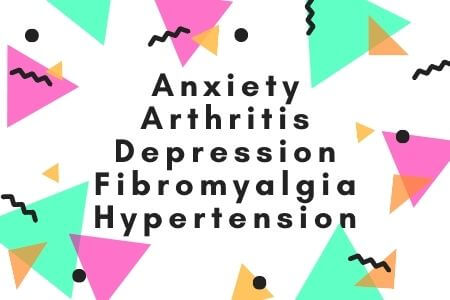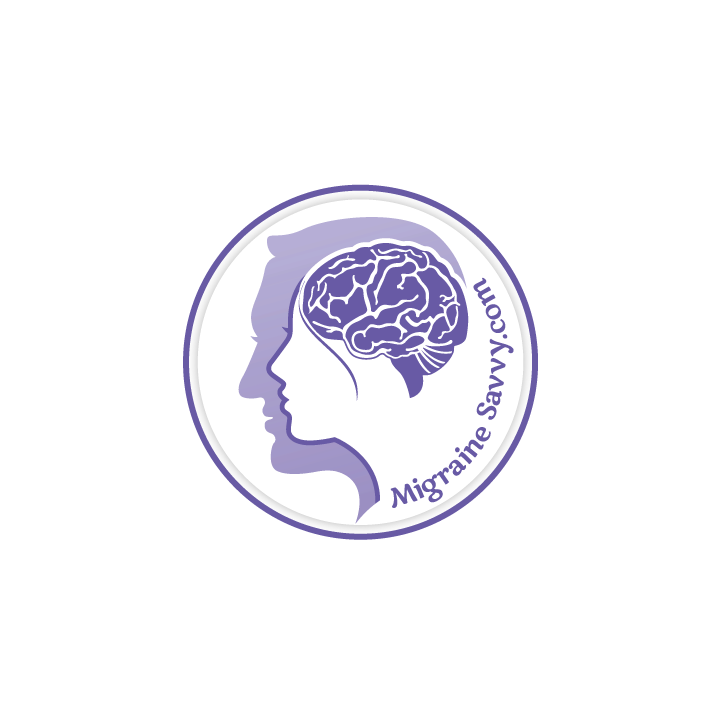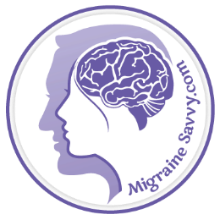- Home
- Associated Conditions
- Connection Between Migraines and Fibromyalgia
Magnesium Deficient = More Migraine Attacks
Science confirms this hidden trigger.
Get all 7 forms your body actually absorbs in one bottle.
🎁Save 10% with my code!
Magnesium Deficient = More Migraine Attacks
Science confirms this hidden trigger. Get all 7 forms your body actually absorbs in one bottle +
🎁Save 10% with my code!
The connection between migraines and fibromyalgia
 The Connection Between Migraines And Fibromyalgia
The Connection Between Migraines And Fibromyalgia
Is there a connection between migraines and fibromyalgia?
Individuals who suffer from fibromyalgia deal with pain and muscle aches throughout the body that can be difficult to deal with, along with fatigue and sleep disturbances. More than half of fibromyalgia patients also report frequent headaches, including tension headaches and migraines. Physicians hypothesize that migraines and fibromyalgia share some of the same causes, which makes the combination common.
Migraines and fibromyalgia can both be debilitating on their own, so the combination of the two problems can make life very difficult. In many cases, migraines may increase fibromyalgia pain, increasing fatigue and even leading to greater problems with depression. If you’re experiencing both migraines and fibromyalgia, here are several steps you can follow to deal with the problem effectively.

The Connection Between Migraines And Fibromyalgia - What You'll Learn In This Article:
- Is there a connection between migraines and fibromyalgia?
- Medical Types of Fibromyalgia Pain
- Non-Medical Pain Categories
- Why it's often mistaken for Chronic Fatigue Syndrome ME/CFS
- 5 Steps to Help with Both
Is there a connection between migraines and fibromyalgia?
Fibromyalgia sufferers deal with pain and muscle aches throughout the body along with fatigue and sleep disturbances. Migraine sufferers can experience the same.
Over 50% of fibromyalgia patients also report frequent headaches, including tension headaches and migraines. Many doctors hypothesize that migraines and fibromyalgia share some of the same causes, which makes this combination common.
Migraines can increase fibromyalgia pain, which increases fatigue and can lead to greater problems with depression.
These two conditions exacerbate each other, and it has also been found that treating one effectively can also cause a reduction in the other. For example, if you treat your migraine effectively, that may reduce the fibro pain. Or conversely if you treat your fibro pain (say in the neck or jaw) it can prevent an attack.
So is there a connection between migraines and fibromyalgia? It appears so.
My #1 Choice in Magnesium Supplementation
Medical Types of Fibromyalgia Pain
There are different types of Fibro pain:
Hyperalgesia
"Hyper" means excess and "algesia" means pain. Hyperalgesia is the medical term for pain amplification in FMS. Our brains appear to take normal pain signals and "turn up the volume," making them more severe than they would normally be. [1]
Allodynia
Painful to the touch or burning skin. That's what it's called when mild pressure from clothing causes pain. A lot people describe allodynia as similar to a bad sunburn. [1]
Allodynia comes in 3 forms:
1. Tactile, which is pain from touch or gentle pressure
2. Mechanical, which is from something moving across your skin
3. Thermal, which is pain from heat or cold that's not severe enough to damage tissue [1]
Painful Paresthesia
Paresthesias are odd nerve sensations that can feel like crawling, tingling, burning, itching or numbness. Sometimes, these sensations can be painful. [1]
Non-Medical Pain Categories
This is not medically recognized but it helps to classify different types of pain.
Stabbing Pain/Pin-Pricks of Pain
An intense sharp stabbing pain that appears randomly throughout the body. Or, tiny pin-pricks of pain (as if a sparkler went off in your hand) that appear randomly. [1]
Random Roving Pain
This is one of those things that reminds you FMS just doesn't make a lot of sense. A lot of us get pain that migrates around the body like rolling waves. [1]
Achiness/Stiffness
High intensity muscle pain and stiffness is generally felt throughout the whole body. Yes, the whole body.
Rattled Nerves
Most people won't understand why I call this a type of pain, but I'm sure most fibromites will get it. Certain things tend to get my whole body on edge, jumpy, and feeling rattled. It makes me ache all over, and sometimes I get nauseous, dizzy and anxious. Things that rattle my nerves generally involve sensory or emotional overload, such as:
- Certain sounds (repetitive, loud, shrill, grating)
- Visual chaos (crowds, meetings, flashing lights, busy patterns)
- Stressful situations (busy traffic, confrontations, fibro-fog induced confusion or disorientation)
Chronic Fatigue Syndrome ME/CFS and Fibromyalgia Are Not the Same
Chronic fatigue is commonly mistaken for or is often just called Fibromyalgia. But they are two different syndromes. For example - I have CFS but not Fibro (anymore).
Common symptoms include sudden severe fatigue, especially following a flu-like illness or virus.
For the fatigue to be considered severe, it must meet these four following criteria:
- It's not relieved by sleep or rest;
- Not the result of strenuous physical labor;
- Significantly reduces your ability to function normally in most situations;
- It gets a lot worse after mental or physical exertion, or after you've been sick.
Other symptoms that can occur are:
- Sleep that isn't refreshing
- Muscle and joint aches without swelling
- Intense or changing patterns of headaches
- Sore throat
- Swollen lymph glands in the neck or armpits
- Memory problems/inability to concentrate
- Irritable bowel syndrome
- Dry eyes and mouth
- Impaired circulation in the hands and feet (cold hands and feet)
- Visual disturbances
Myalgic encephalomyelitis/chronic fatigue syndrome is a disabling chronic illness. People with ME/CFS experience profound fatigue that does not go away with rest, as well as sleep issues and other problems. Other names are post-viral fatigue syndrome (PVFS), systemic exertion intolerance disease (SEID).
5 Steps to Deal with Migraines and Fibromyalgia
If you’re experiencing both migraines and fibromyalgia, here are 5 steps you can follow to help you deal with them effectively.
Step #1 – See a Physician to Treat Both Problems
First, it’s essential to see a physician to treat both medical problems. If you think you are dealing with these problems, talk to your doctor. If you’re already being treated for fibromyalgia, talk to your doctor about the headaches to find out if you are experiencing migraines.
Effectively treating fibromyalgia can help to reduce migraine problems, while treating migraines effectively can help reduce fibromyalgia problems. This is why it’s essential to ensure you are receiving treatment for both problems.
Step #2 – Stress Reduction and Relaxation Techniques
Stress reduction and relaxation techniques are known to help reduce migraines caused by stress, but these techniques are also effective for reducing the symptoms of fibromyalgia. Try different stress reduction and relaxation techniques, such as visual imagery, yoga, deep breathing and meditation. Find the techniques that work for you. Simply reducing your stress levels can help you deal with the combination of migraines and fibromyalgia.
Step #3 – Reduce Problems with Insomnia
The insomnia that comes with fibromyalgia may trigger migraines to occur, so reducing problems with insomnia may be helpful. The body is unable to recuperate from stress and pain without adequate sleep, which can trigger migraines or increase fibromyalgia pain.
Talk to your physician about your problem with insomnia. Your doctor may recommend a sleep medication like Lunesta or Ambien, or another treatment that addresses the root cause of your specific sleep problem. Improving your sleep may help to reduce the number of migraines you experience.
Ask to be checked for sleep apnea.
Step #4 – Treat Muscle Triggers
In many cases, fibromyalgia creates muscle pain, spasms and tightness that may end up triggering a migraine. Many patients with fibromyalgia often experience TMJ pain or neck pain before or during a migraine.
Treating the muscle triggers, by strengthening certain muscles, loosening certain muscles or taking muscle relaxers, may reduce the occurrence of migraines among fibromyalgia sufferers.
Step #5 – Ask Your Doctor About Antidepressants
Certain antidepressants, like selective serotonin and norepinephrine reuptake inhibitors (SNRIs) are used to treat both fibromyalgia and migraines. Many physicians believe that lack of serotonin may be one of the root causes of both problems, which is why these antidepressants may be effective treatments. One common SNRI used to treat fibromyalgia is Cymbalta, which may also help to reduce migraine problems as well.
Migraines and fibromyalgia can significantly disrupt your life, especially if you do not take steps to treat both of the problems. While these steps may not completely eliminate the problem, they can lead to improvement.
Until next time, be well, and may your toughest days be met with comfort and care. Keep going - you are stronger than you know.
~ Holly, Migraine Savvy
WANT MORE TIPS? Subscribe to my newsletter and follow along on Facebook and Pinterest for all of the latest updates.
ASSOCIATED CONDITIONS Related Articles
How to be more MIGRAINE SAVVY right now...
The Connection Between Migraines And Fibromyalgia page references:
1. Adrienne Dellwo at: https://www.verywellhealth.com/seven-types-of-fibromyalgia-pain-716138
2. http://www.news-medical.net/health/Fibromyalgia-and-Headaches.aspx
3. http://www.fibromyalgia-symptoms.org/fibromyalgia_chronic_headaches.html
4. http://everythingfibromyalgia.com/fibromyalgia-and-migraine-headaches/
5. http://www.webmd.com/fibromyalgia/features/treating-fibromyalgia-pain-medication-options?page=2
6. http://www.mayoclinic.com/health/migraine-treatment/AN01822
The Connection Between Migraines And Fibromyalgia posted Oct. 6, 2020




















